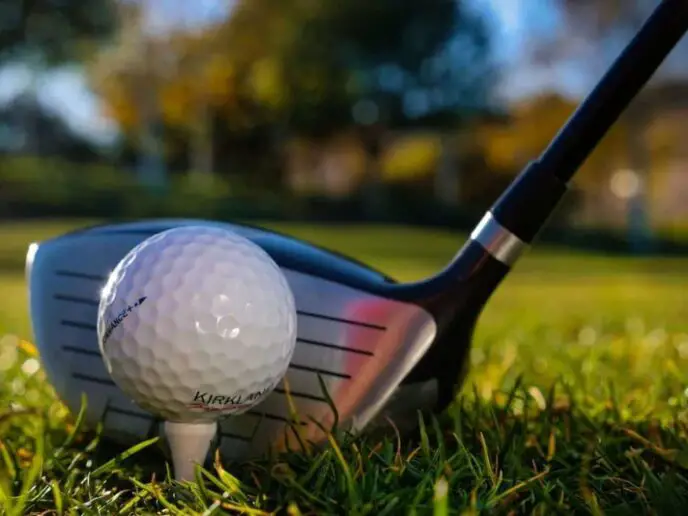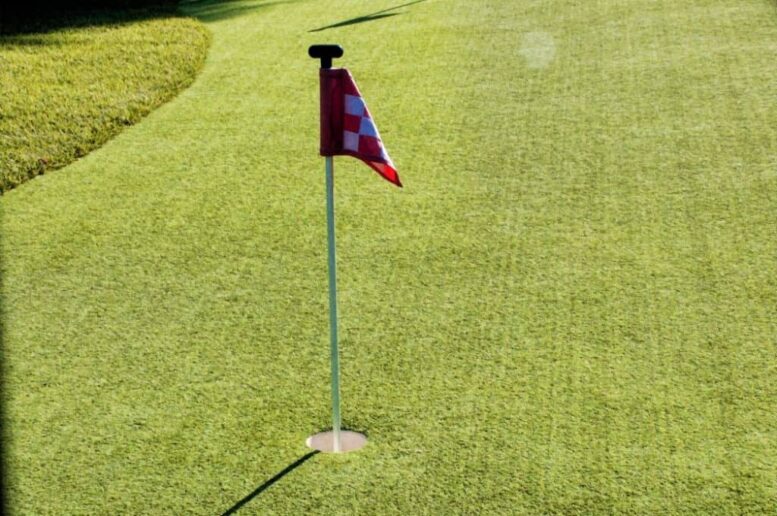What is a Golf Stick Called? (Answered)
If you’re into golf and play or watch the sport often, you may be taking many things related to the game for granted, such as rules or terminology.
However, for those that are new to the sport, it can be difficult to grasp even the basic regulations and lingo, especially since sometimes some terms can have multiple meanings.
So, it’s not surprising to hear golf newbies ask questions that may seem obvious to those with more experience in the sport.
One of those questions often asked by people just starting their golf journey or simply wanting to learn more about the game is what is a golf stick called?
Below, I’ll provide a detailed answer to this and explain a couple of other meanings “stick” can take in golf.
Table of Contents
What is a Golf Stick Called?
When they ask what is a golf stick called, people generally refer to the stick golfers use to hit the ball with.
In golf, these sticks are called golf clubs.
Although it’s only a part of the golf equipment, the club is probably the most important piece of golfer’s gear and the one that has the most influence on the player’s performance on the course.
A golf club is a rather simple piece of golf equipment and it’s composed of a shaft with a club head and a grip.
There are several types of golf clubs, each designed for different shots and I’ll explain them in more detail later.
According to the golf rules, during a game, each player can carry a set consisting of a maximum of 14 clubs.
There are traditional combinations sold together by most retailers, but players are free to use whatever 14-club combinations they want.
Why is the Golf Stick Called Club?
Golf has been around for centuries, with the first clubs appearing in the British Isles, more precisely in Scotland, way back in the 15th century.
However, while the development of the sport is tied to Great Britain, the word for the club, as well as the word golf itself, have somewhat different origins.
The sport of golf, was in fact, named after the word for the club.
The linguistic origins of the word can be traced to the Dutch word kolf or kolfe, which simply meant “club.”
The Dutch used to play a sport similar to golf, only it was played on ice by skaters who used a club to hit the ball.
At those times, Dutch and Scottish ports had very active trade connections, so the sport and the word for the club quickly arrived on British shores where it was developed into the game we know today.
Different Types of Golf Clubs

As I already mentioned there are different types of golf clubs, each with its own purpose on the golf course.
Learning the advantages of each type and mastering their use is the key to successful golfing performance.
More detailed information on each type of golf club is below.
Woods
Woods are mainly intended for long-distance shots, down the fairway toward the hole.
To provide the maximum speed of the ball when hit, these clubs commonly have a long shaft and a large head.
Initially, these clubs were made entirely of wood, hence their name.
However, today, they’re mostly made of other materials.
The first wood made of steel was introduced in 1979, while modern clubs of this type are also made using titanium, carbon fiber, and scandium.
Still, the name remained as it was a widely accepted way to denote the shape of the club and its primary purpose.
Wood clubs today are very light allowing for faster swing speed.
Their head is hollow and made of titanium or similar composite material, while the shaft is commonly made of graphite.
Golfers will usually use three or four different woods, depending on the kind of shot they need to make.
Irons
Irons are golf clubs used for a variety of different shots all over the course.
They can be used for shots from the tee box on short holes, to the rough or fairway as you approach the green, in tricky circumstances when you have to get out of trees, and in many other situations.
Just like woods, these clubs got their name from the material originally used in their manufacturing.
While they were originally made of forged iron, modern manufacturers usually use different steel alloys.
Iron clubs are smaller than woods, especially when it comes to their club heads.
Their all-metal heads feature a flat-angled face, while the shaft is somewhat shorter and at a more upright angle to the head than woods.
Also, most heads are solid, rather than hollow. Irons are grouped into a few categories, depending on their relative loft angle and shaft length.
Wedges
Wedges are a special subcategory within irons.
They typically have the same club heads as irons, but they’re set at a more severe angle to gain more loft.
This type of club has the highest loft angles of all golf clubs.
They’re used in a variety of situations that call for shots of high accuracy and commonly at a short distance.
Golfers usually resort to wedges on approach into the green, for pitches and chips around the greens, and when they need to get out of sand bunkers.
Wedges are grouped into five main types according to the loft angle which ranges from 45 to 64.
The five categories are pitching, gap, sand, lob, and ultra-lob wedge.
Hybrids
Of all golf club types, hybrids were the latest to be introduced, making an appearance only at the turn of the 21st century.
Basically, hybrids are the cross between woods and irons, offering key qualities of both types.
They provide a higher launch and a greater distance than the woods, but with the ease of the swing, irons provide.
Their design is mostly inspired by wood clubs with similar hollow heads made of metal, with a slightly convex face.
Different types of hybrids are numbered similarly to irons (for example, 3-hybrid, 4-hybrid) and the numbers point to the iron they replace.
In general, golfers use these clubs as replacements for irons, especially longer ones, as they find it easier to hit the ball than with the corresponding iron.
Also, they’re often used by less muscular players as they allow greater carry distances with slower swings.
Putters
The most-specialized type of golf club is the putter. It’s also the golf club category that is available in the widest range of different shapes and sizes.
The main purpose of putters is, of course, putting.
So, they are mostly used for the final strokes when the ball has to roll off the green toward the hole.
While many believe that putters don’t have a loft, they actually do and it’s often put to 5 degrees helping the ball get lifted from the indentation it may have made.
The face of the club head commonly has a grove to help the ball roll off the green rather than skid off the impact. This helps the ball roll further and reduces the bounce.
The putters are commonly produced in three different club head styles and three different lengths.
It’s up to each golfer to decide which putter suits them the most.
What Else can “Stick” Mean in Golf?

I already mentioned that certain golf terms can have multiple meanings.
The “stick”, besides being another, although far less used, word for a golf club, also has other uses.
It can often be used to refer to the flagstick.
The flag stick is, logically, the flag on the stick placed into each hole in the putting green.
Its main purpose is to give golfers a point of reference when hitting the shot toward the green.
The word “stick” is also a slang term for the scratch golfer.
A scratch golfer commonly refers to a player who plays with a handicap of zero, meaning that they shoot par no matter how difficult the course is.
Another use is within the phrase “off the stick.”
This term is used when none of the golfers’ handicaps is taken into account when keeping score, so the players with the lowest score will win the round.
Conclusion
If you tried to describe golf in the simplest of terms, it’s a game of sticks and balls.
Of course, sticks are far more important for how the game will play out and how each of the players will perform.
Therefore, it’s important to get yourself familiar with and learn about this piece of golf equipment, starting with the fact that golf sticks are called golf clubs.
As I explained, the term itself has origins dating back centuries ago, while different types of golf clubs typically got their name after the material they’re made of.
Learning about golf terminology and rules will not only help you follow and understand the game but can also be a big step to falling in love with the game and getting yourself on the golf course.




